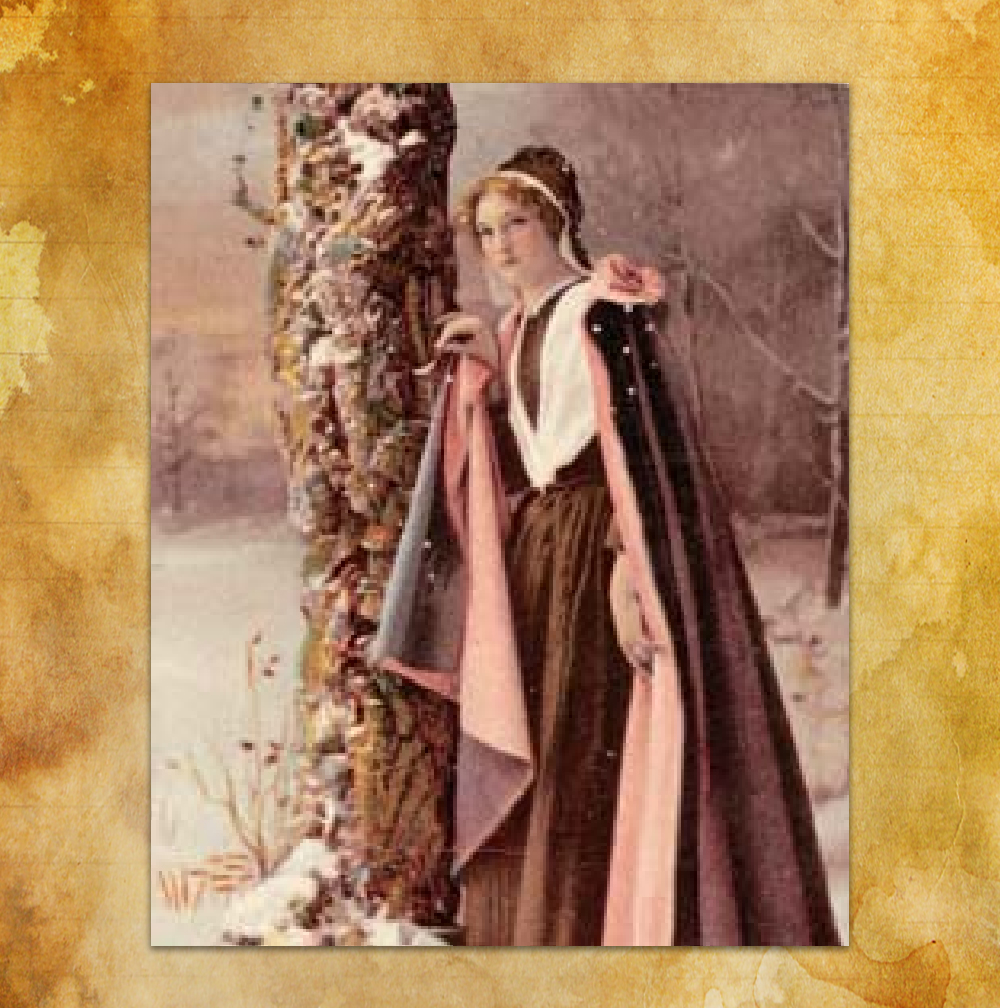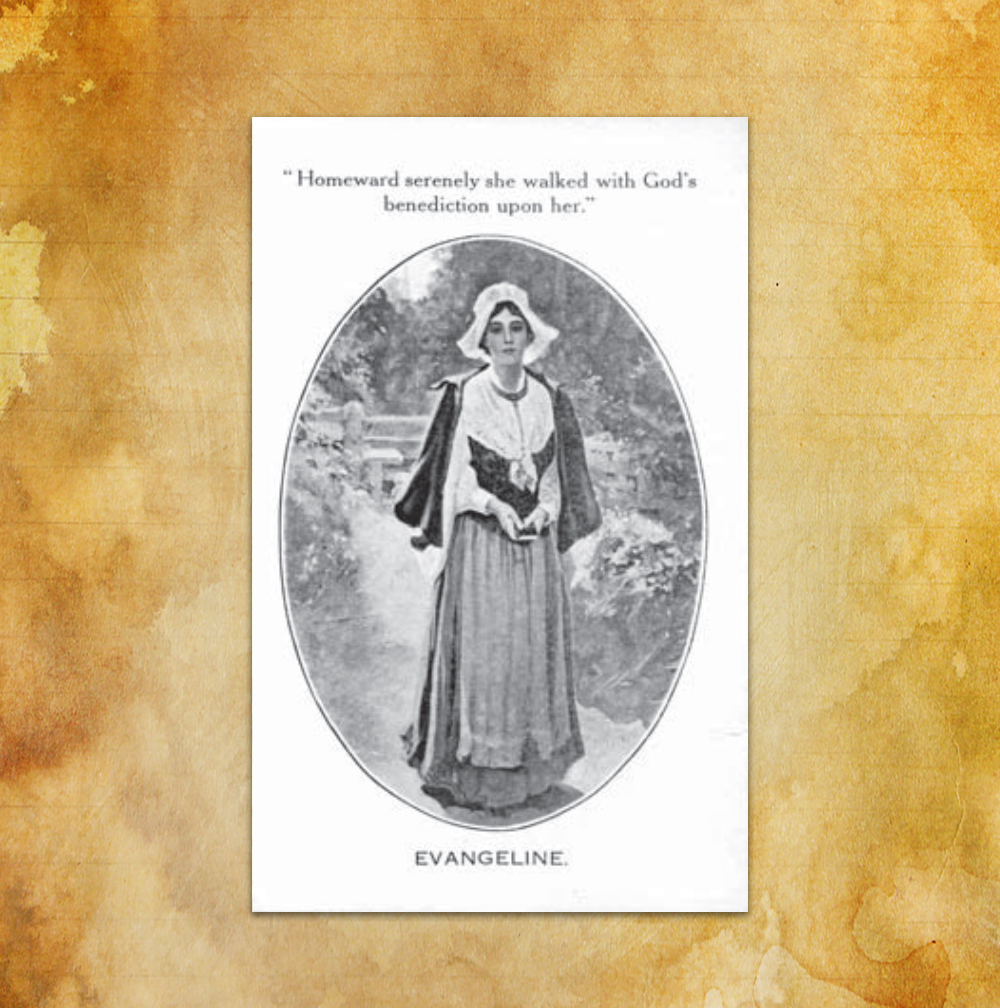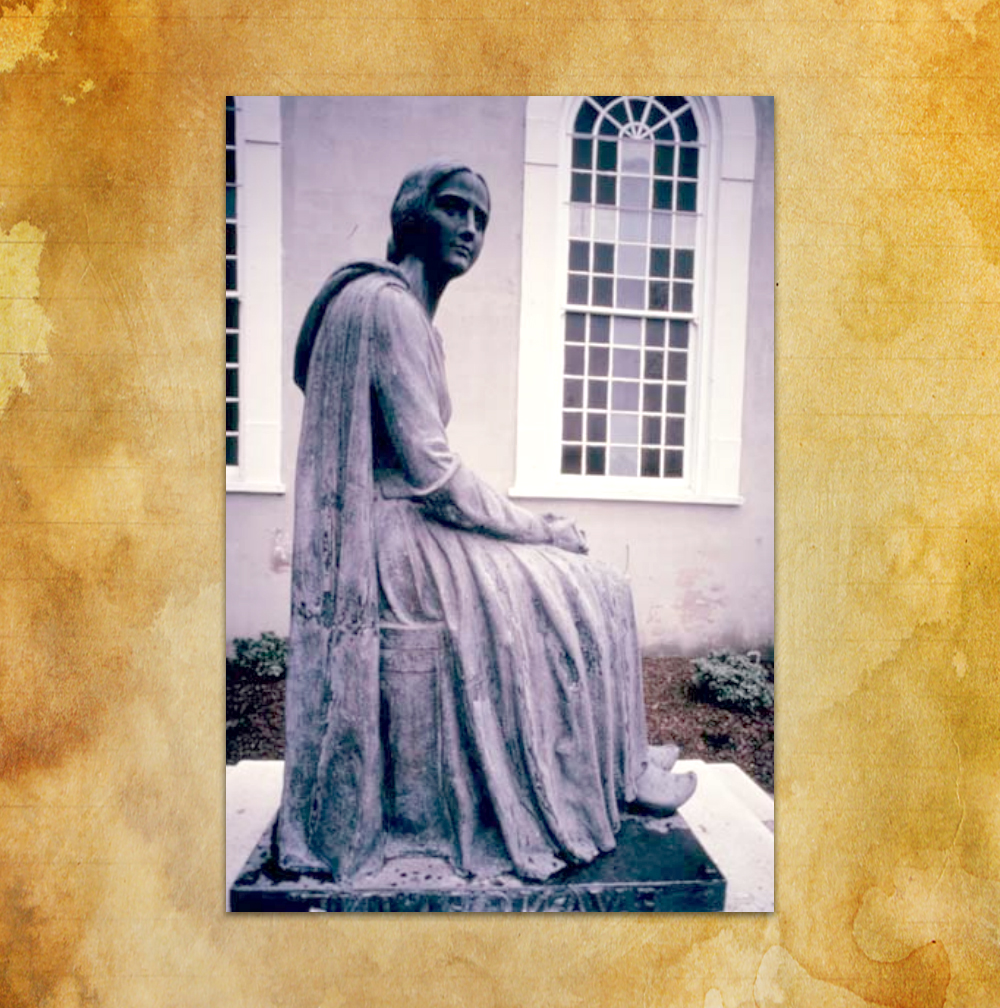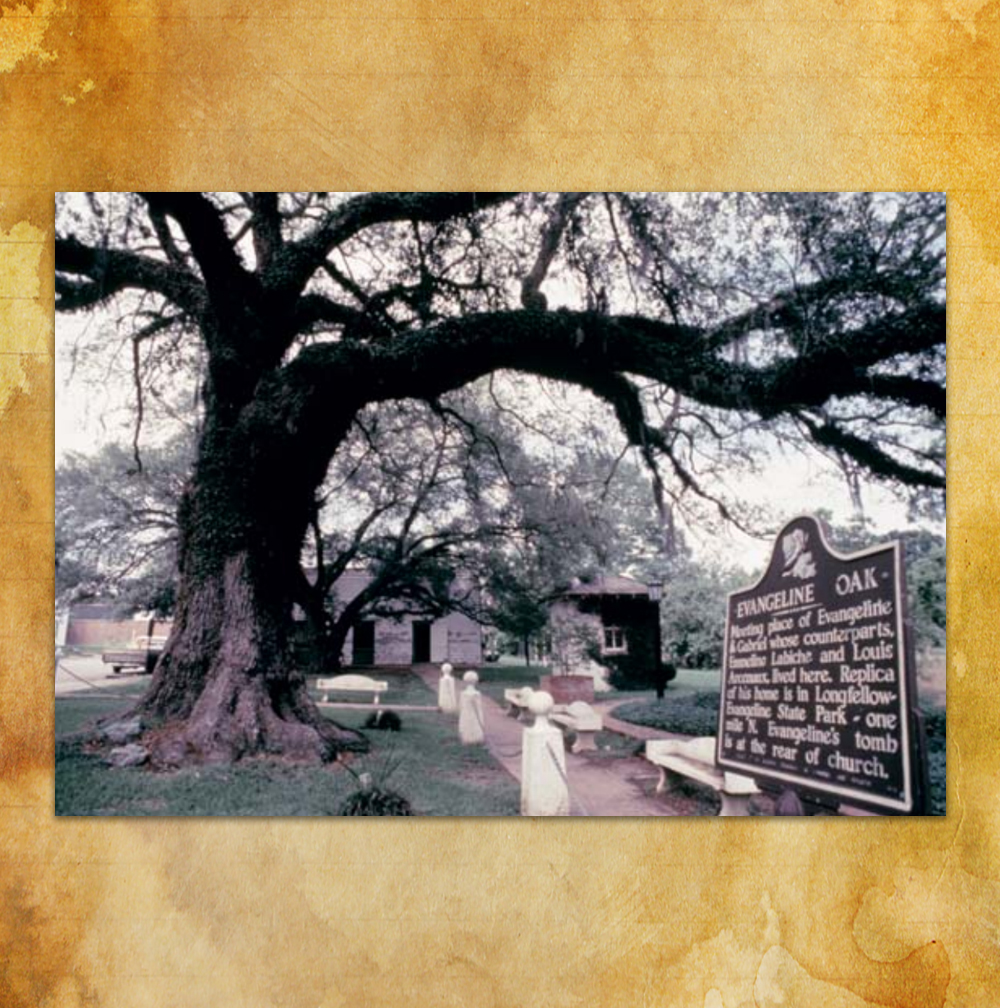
Henry Wadsworth Longfellow (1807-1882).
The poet as he appeared ca. 1860.
- Courtesy of the Cambridge Historical Society

Evangeline Post cards (1906-1920) (1 of 3)
Romanticized depictions of Longfellow’s
fictional heroine, Evangeline.
- Courtesy
of the Nova Scotia Museum of Cultural
History

Evangeline Post cards (1906-1920). (2 of 3)
Romanticized depictions of Longfellow’s
fictional heroine, Evangeline.
- Courtesy
of the Nova Scotia Museum of Cultural
History

Evangeline Post cards (1906-1920). (3 of 3)
Romanticized depictions of Longfellow’s
fictional heroine, Evangeline.
- Courtesy
of the Nova Scotia Museum of Cultural
History

Statue of Evangeline, St. Martinville, Louisiana
A gift to the town from Delores Del Rio, st ar of the 1929
fi lm adaptation of Longfellow’s poem, this st atue serves
to memorialize the Acadian deportation and the later
settlement of many Acadians in Louisiana.
- Courtesy of the Louisiana Offi ce of Tourism

Evangeline Oak, St. Martinville, Louisiana
Emmeline Labiche and Louis Arceneaux, the “true”
Evangeline and Gabriel (from a reinvention of
Longfellow’s poem by Felix Voorhies), are supposed to
have met under this tree after their long separation.
Under either pair of names, this entirely fi ct ional
couple, continues to symbolize the Acadian triumph over
adversity resulting in their st rong presence in Louisiana
today as Cajuns.
- Courtesy of the Louisiana Office of Tourism

Statue of Evangeline, Grand Pré National Historic Site, Nova
Scotia
Standing outside the church at Grand Pré, the entire site st ands as a
memorial to the Acadian deportation of 1755.
Courtesy of Nova Scotia Tourism, Culture and Heritage
- Evangeline: A Tale of Acadie
Henry Wadsworth Longfellow
❮
❯
In 1847, Henry Wadsworth Longfellow published his poem Evangeline: A Tale of Acadie, a fictional tale of Evangeline and Gabriel, lovers separated during the Acadian deportation.
During a conversation at his home with Nathaniel Hawthorne and the Reverend Horace Connolly in 1840 or 1841, Longfellow heard the legend of two betrothed lovers separated during the Acadian expulsion. Intrigued by the tale, he went on to read Thomas Chandler Haliburton’s History of Nova Scotia, and in 1845 began work on the poem. Although fictional and historically inaccurate in many respects, it has served as the only glimpse of the hist oric event for several generations of readers. Th e character Evangeline herself has become representative of the Acadian removal and subsequent dispersal. An Acadian presence remains st rong today in Nova Scotia, New Brunswick, Quebec, and in Louisiana, where they have become known as Cajuns.
“
“Many a weary year had passed since the burning of Grand-Pré,
When on the falling tide the freighted vessels departed, Bearing a nation, with all its household gods, into exile, Exile without an end, and without an example in story. Far asunder, on separate coasts, the Acadians landed; Scattered they were, like flakes of snow, when the wind from the northeast
Strikes aslant through fogs that darken the Banks of Newfoundland.”
– Baltimore Sun Article, 1849
”


